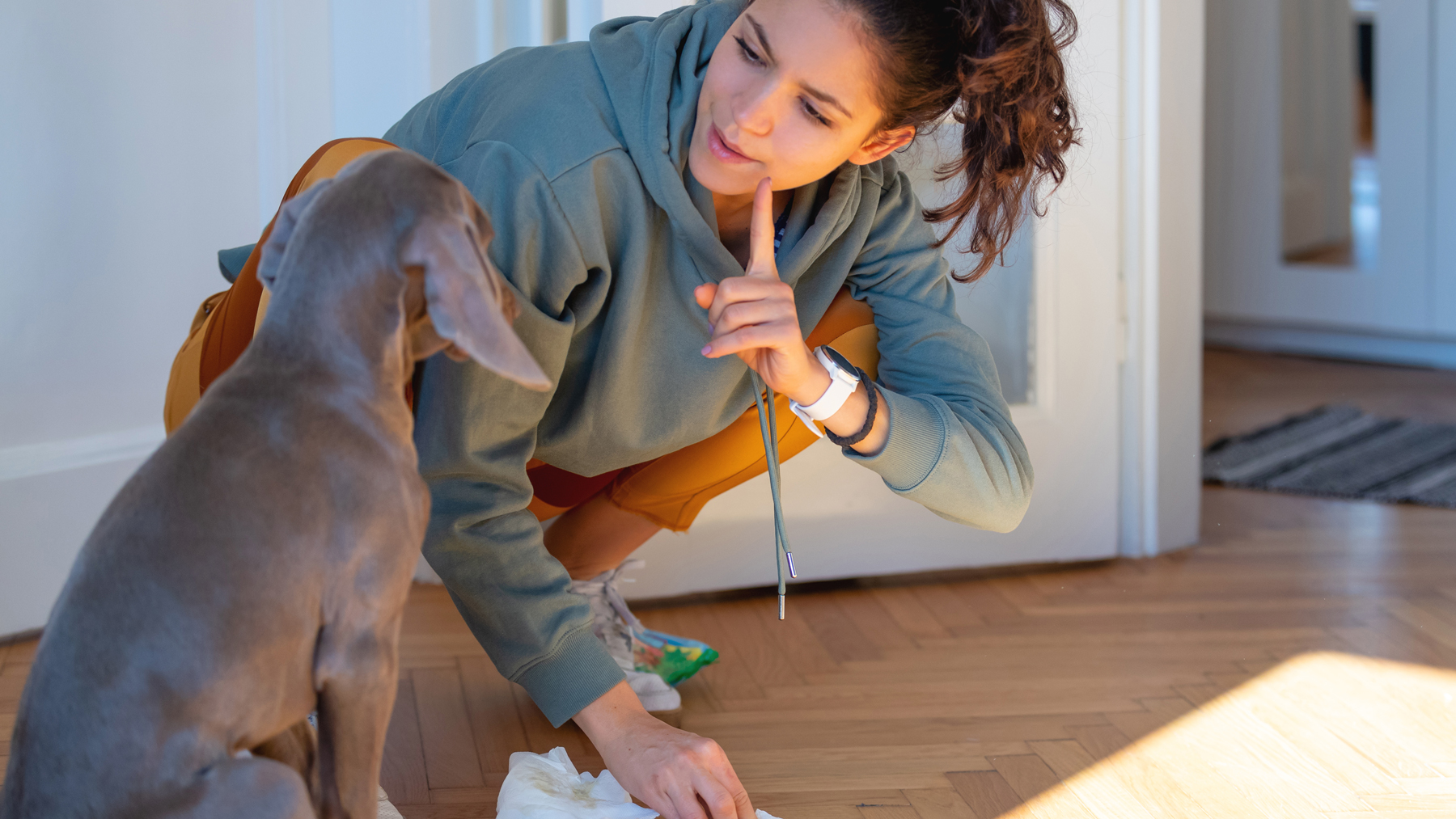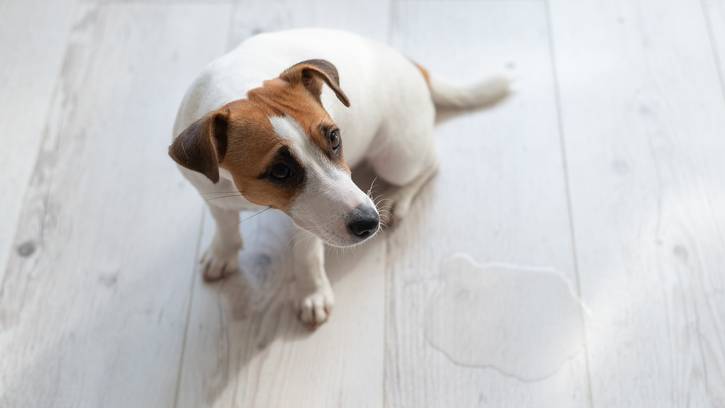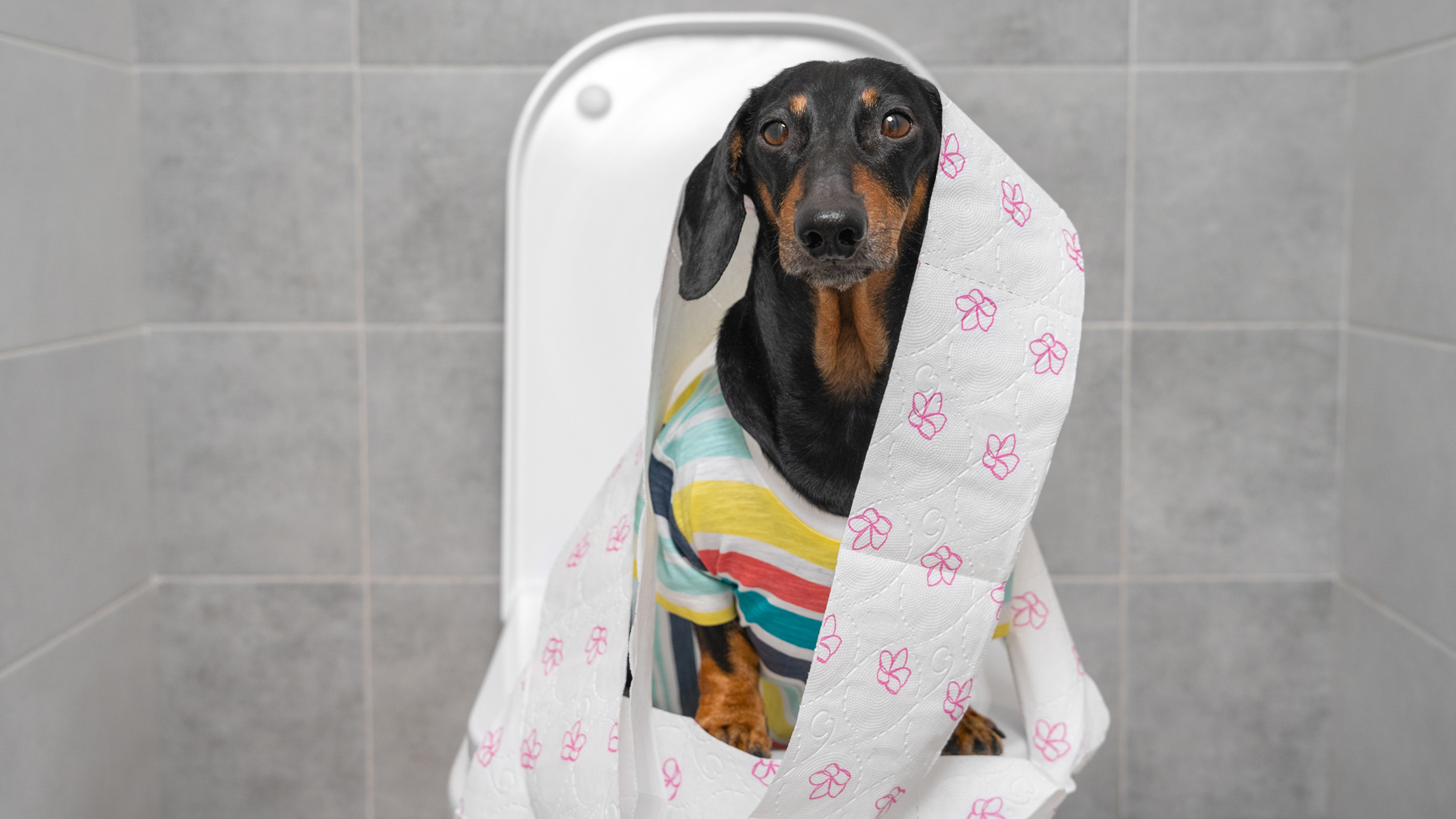How to potty train an older dog
Discover vet-approved, effective and reliable methods for how to potty train an older dog

Potty training isn't just for puppies, if you’re looking to potty train an older dog, don’t worry, it's a skill that can be learned at any age. With the right approach, patience, and consistency, you can help your furry friend develop good bathroom habits and create a clean and comfortable living environment for both of you.
Adopting an older dog requires a slightly different approach to training compared to training a puppy, this is because they will already have developed certain habits or behaviors. The same considerations are applied when learning how to crate train an older dog.
Ultimately, understanding the reasons behind your dog's accidents and addressing any underlying issues is crucial. Dr Joanna Woodnutt, an experienced vet with extensive knowledge of dogs and their bladders, addresses some of the common causes of potty accidents in older dogs and shares a range of training methods for potty training, ensuring a more effective and compassionate approach is taken.
With our step-by-step instructions and expert advice, you can navigate the potty training journey with confidence and set your older dog up for success.
Why does my older dog not know where to toilet?
If you have just adopted a dog, they may never have been toilet trained. Dogs kept outside in a yard have never had to learn that houses are not toilets, and stray dogs may never have set foot in a house before, let alone learned about potty training.
Dogs may also have been taught that it’s okay to toilet on newspaper in the house, or had owners that never bothered to toilet train them. Sometimes, a dog has been potty trained but then forgets what he’s learned and starts to have accidents.
This can happen for lots of medical reasons, such as urinary tract infections, kidney disease, doggy dementia, or spinal pain, but it can also happen for behavioral reasons, such as anxiety or due to a change in routine or environment.
If you know your dog was previously toilet trained and seems to have forgotten, it’s important to get them checked out by a vet so that any medical conditions can be treated.
Can an older dog still be potty trained?
Firstly, you might be wondering if there’s any point in trying to potty train your older dog. Is it even possible? The good news is yes – it is! Older dogs may be a little slower to learn than puppies because they already have bad habits, but most are just as capable of being clean as normal dogs.
It’s important to remember that you’re dealing with an adult dog who has had years of doing things a certain way, and may even have been punished in the past – so be patient, take your time, and you’ll get there in the end.
How to potty train an older dog
The good news is that potty training an older dog is similar to toilet training a puppy. The main difference is that an older dog may send fewer signals that they’re about to go to the toilet. While a puppy might circle for a while or sniff at the floor, an older dog may not – and if people have used punishment when toilet training in the past, they may even purposefully hide from you.
The good news is that an older dog has a far greater ability to hold his pee, so once you’ve got into the swing of things, you shouldn’t get too many accidents. So how do you potty train an older dog?
Use a crate
The key to toilet training is to create opportunities for your dog to get it right, whilst reducing the chances for them to get it wrong. So, the first step is to use a good dog crate.
Since dogs naturally don’t want to pee in their beds, confining them to bed when you can’t watch them means you’ll get fewer accidents. He should go into his crate whenever you can’t be there to watch him, such as when you go out or overnight.
Capitalize on that morning wee
As soon as you let your dog out of his crate in the morning, take him to where you want him to pee. Ideally, he needs to walk there himself – you may need to attach a lead or move quickly to keep him moving to the right place. Once he’s there, wait for him to pee, and praise him. Give him a treat and a fuss – he got it right! If he doesn’t go, put him back in his crate and try again in 10 minutes – don’t let him out into the rest of the house until you’ve got that first pee right where you want it.
Take advantage of other likely wee times
It’s not just first thing in the morning that dogs wee – they may want to go after eating, after sleeping, or after playing. Take your dog out at each of these points to give him a chance to get it right. Be ready to give him lots of fuss and a treat when he goes in the right place – he’ll naturally want to repeat this and get the same reaction a second time.
Watch him like a hawk
You’ll also need to reduce the chance of an accident when you’re around. To do this, try to restrict where they go in the house, which might mean closing doors or setting up stair gates. You’ll need to be prepared to take them out at any sign of needing the toilet, and you can’t do that if they’re sleeping in another room out of sight. Watch him for signs of needing to go, such as pacing, sniffing, or circling. With an adult dog you may get very little warning, so be prepared to act quickly.
Ignore accidents
Don’t punish your dog if you find an accident inside. Punishing will just lead him to become more secretive about his pees, which will make your job harder. Ignore him entirely – don’t even make eye contact! Make sure you clean up any messes with a special enzymatic cleaner designed for pet smells – anything else may leave his scent behind and encourage him to do it again.

Vet top tips for potty training a stubborn older dog
If your dog is particularly stubborn and potty training isn’t going well, there are a few things you can try:
- When in the house, use a long line to attach your dog to you at all times. This helps to ensure he doesn’t wander out of sight to pee and helps you to keep an eye on what’s going on. Don’t worry, it won’t be forever – the habit usually starts to break after a few days.
- Take advantage of a dog’s instinct to scent mark. Collect your dog’s pee (or use pee from a friend’s dog) and sprinkle it in the area you’d like your dog to toilet. Next time you take your dog there, let them sniff – they will almost certainly urinate, allowing you to congratulate them on getting it right.
- Put a strict schedule together to help your dog plan his toilet breaks. Walk, feed, and offer toilet opportunities at the same time each day – the predictability will help your dog get used to his new routine. He’ll also know it’s safe to hold his urine as he’ll know how long to his next toilet break.
How to potty train an older dog without a crate
If you don’t have a crate, or your dog can’t use one for some reason, potty training can be harder. If you have a large dog, confining him to a small room may serve the same purpose as a crate. If not, you may have to accept that night-time accidents will happen.
One option is to shut your dog overnight in a room that’s easy to clean. Ideally, this room should be one that you can bar access to in the future. The aim is that once he gets the idea that he should toilet outside during the day, you move his night bed to a new room and stop him from accessing the old one – thereby breaking the habit of peeing in the old room.
Another option is to sleep near your dog at night and tether him to you. If you feel or hear him stir, get up and take him out. However, this method has some problems – it doesn’t work when you aren’t there, and it can cause more bad habits like sleeping with you.

So that’s how to potty train an older dog! It doesn’t have to be complicated, but you do have to be patient. Just remember to keep rewarding the good behaviors and ignoring the bad, and eventually, you’ll get there. However, don’t forget to contact a vet if you’re really struggling – a medical issue may be behind it, or you may need some expert advice from a certified behaviorist.
PetsRadar Newsletter
Get the best advice, tips and top tech for your beloved Pets
After graduating as a vet from the University of Nottingham, Dr Joanna Woodnutt went on to practice companion animal medicine in the Midlands. Since then, she has also written for countless online and print publications and is a regular contributor for Edition Dog Magazine.
- Jessica DowneyStaff Writer

